Ingrid Vidal
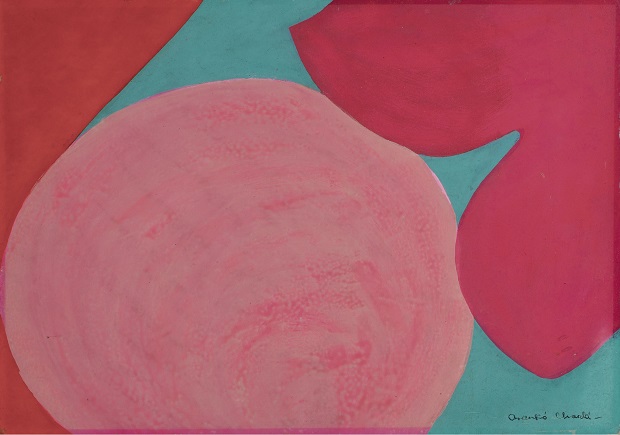
These days more and more museums are re-examining their discourses and rescuing works by women artists from the basements. To mark International Women’s Day we propose to take a look at some of the ideas that were crucial to, on the one hand, the birth of museums and, on the other, to the discrimination of women artists in the hegemonic historiographical narrative.
We have to turn our gaze towards the enlightened ideals that prevailed – about knowledge, education, the family and the role of women in the State – to see how deeply rooted certain prejudices were, concerning art, women – artists or not – and the functions of the museum. Doubt has been cast on the legitimacy of this imaginary, and one sign of it is the re-examination of the museographical narratives that put forward feminist perspectives.
The desire for classification in the 18th century: the origin of museums
The Enlightenment was a philosophical movement that held sway in Europe from the mid 18th to the early 19th century; particularly active in France, Germany and Great Britain, it focused on the problem of knowledge.
Enlightened thinking banished the ideas of a mysterious nature governed by divine laws and ushered in the vocabulary promoted by French rationalism and British empiricism. With the formulation of ‘natural laws’ people sensed that if they could learn how nature works, they could also predict and even master it; the thinking was that society is governed by analogous laws and that the conduct of individuals can be controlled through education. An idea popular in that period is that artistic perception and taste both depend on the education one has been given.
This desire to rationalize the world was conducive to the appearance of Denis Diderot and J. B. D’Alembert’s Encyclopaedia, often seen as the materialization of the desire for classification in the 18th century.
- Front page of the Encyclopedia, or a Systematic Dictionary of the Sciences, Arts and Crafts (1751- 1772). Several volumes from 1773 and a facsimile edition are kept in the museum.
- Louis Monziès (after a painting by Ernest Meissonier), La lecture chez Diderot (At Diderot’s Library, 1888)
Due to the important encouragement of the arts, letters and sciences, between the 17th and 18th centuries most of today’s Academies and Schools of Fine Arts appeared. To mention just a few: in 1648, the Académie Royal de Peinture et Sculpture in Paris; in 1752, the Real Academia de Bellas Artes de San Fernando; in 1768, the Royal Academy of Arts in London, and, in Catalonia, the Reial Acadèmia Catalana de Belles Arts de Sant Jordi was founded in Barcelona in 1850.
The Academy administered artists’ training, determined artistic trends, and established the hierarchy among pictorial genres. The candidate for the first prize was history painting, considered the most prestigious genre. Genre painting, or of customs, despite being considered second-level, was very popular with the bourgeoisie, who could see themselves identified in the everyday subjects, and at the same time it pleased critics like Diderot as it was a genre that encouraged moralizing messages, increasingly deep rooted in 18th-century society. The categories least valued by the Academy were landscape and still life, considered to be inferior because they depicted lifeless objects and did not offer any moral lessons.
The Salons: the first public exhibitions
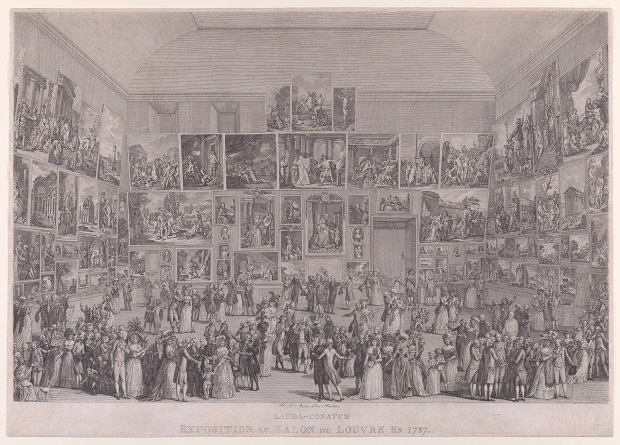
In this period of artistic fervour the Salons appeared: the first public exhibitions. Before then the only public space that everyone could enter was the church. The first exhibitions were held in France in the late 17th century but democratic access to them was not consolidated until the 19th century. With the Salons the concept of ‘public’ was born, and with it art criticism. Initially the critic took on the role of commentator and educator of the public in situ. In 1760 Diderot’s Salons began to be published in Correspondance Littéraire. The Salons acted as disseminators of artistic trends among artists and as setters of fashions and tastes among the bourgeois public. Critics like Diderot maintained that art must move, excite, and at the same time transmit an edifying message.
In keeping with the enlightened idea of equality of opportunities – neither privation nor privilege due to birth – the museum was born, conceived as a permanent art exhibition open to all.
How women were depicted at the time museums appeared
Throughout the 17th century – among numerous virgins and saints – a large number of of paintings were done on mythological themes in which women were shown as objects to be exchanged between men.
Here are two of them: The Rape of Proserpine and The Rape of the Daughters of Leucippus, both by Rubens.
- Peter Paul Rubens.The Rape of Proserpine (1637). Museo del Prado.
- Peter Paul Rubens.The Rape of the Daughters of Leucippus (1617). Alte Pinakothek München.
Patricia Mayayo comments that there is no consensus in the interpretation of the violence to women in this kind of work. Through modern eyes some see a kind of connivance and naturalization of the subordination of women using violence that is endorsed by Greco-Latin tradition. Others propose neo-Platonic interpretations and pedagogical messages about the terrible consequences of incontinent impulses. Moreover, it seems that during the 16th and 17th centuries depictions of rapes and divine punishments became fashionable in royal palaces, and the sexual violence depicted becomes, in these contexts, the allegory of the monarch’s power.
Another well-known case is the sculptural group The Rape of the Sabines, by Giambologna, placed by order of Francesco de’ Medici in the Piazza della Signoria in Florence as a public show of the family’s power.
The bourgeois family: the pillar of the nation
Ideas about marriage changed during the 18th century. At the beginning of the century marriage was understood as an alliance between families, particularly for reasons of financial interest. Gradually, and with the penetration of enlightened ideals in the thinking of the period, the family became an institution and marriage became a personal commitment. Rousseau claimed that the family is the basis of the state; he maintained that people should only get married for love and he put forward the woman as the core and the pillar of the new institution. Women had to be wives and mothers.
In contrast to the figure of the wife-mother devoted to the family, we find the depraved and frivolous woman, neither wife nor mother, and the femme-philosophe who strays from her path and defies her nature in order to devote herself to intellectual matters reserved for men.
Daughter, mother and wife: «a proper woman»
«A woman’s education must therefore be planned in relation to man. To be pleasing in his sight, to be useful to him, to win his respect and love, to train him in childhood, to tend him in manhood, to counsel and console, to make his life pleasant and happy, these are the duties of woman for all time, and this is what she should be taught while she is young. The further we depart from this principle, the further we shall be from our goal, and all our precepts will fail to secure her happiness or our own.»
Jean Jacques Rousseau, Emile, or On Education (1762)
The combination of woman and motherhood became the ideal of bourgeois femininity. The assignation of the private domestic domain to women and the public to men was finally consolidated in the 19th century. History painting continued to be the most important genre in the academic sphere but the narrative genre (of customs) appeared as a tool to regulate the morality of society: the prescription of gender-based identities from the domestic domain.
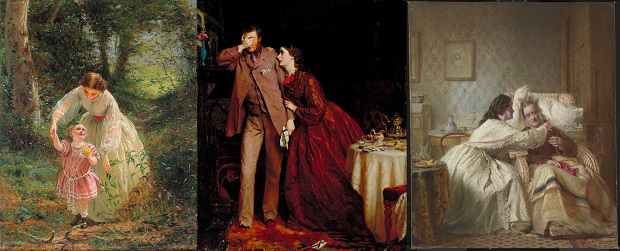
- Panel 1: Guide of Childhood, Dunedin Public Art Gallery
- Panel 2: Companion of Manhood, Tate Britain
- Panel 3: Comfort of Old Age, Tate Britain
Look at this triptych by George Elgar Hicks entitled Woman’s Mission. In the first panel entitled Guide to Childhood a mother is shown guiding her son’s first steps; in the middle we have Companion to Manhood in which the same woman stands by her grief-stricken husband. Mayayo explains that this panel probably referred to the Victorian metaphor of the oak and the ivy: he is the oak and she the ivy; ivy needs the oak in order to grow around it, but it also accompanies and consoles it in the worst moments. In the last panel we find Comfort of Old Age in which the same woman looks after her elderly father.
The museum as a place of power and representation
While the ideal of bourgeois femininity was becoming consolidated, some women’s voices were raised. In 1791, in France, Olympe de Gouges wrote her Declaration of the Rights of Woman and of the [Female] Citizen; in 1792, in England, Mary Wollstonecraft published her A Vindication of the Rights of Woman.
- Alexander Kucharsky. Portrait of Olympe de Gouges (1748–1793). Private collection.
- John Opie. Portrait of Mary Wollstonecraft (1791). Tate.
In contrast to Rousseau’s pedagogical ideas, Mary Wollstonecraft defended egalitarian education that did not condemn women to conjugal dependence but gave them tools for autonomy. Education must not be elitist and it must also be addressed to middle-class women. Wollstonecraft said that the social inferiority in which women found themselves was due to their terrible educations aimed only at pleasing men, ignoring any form of intellectual stimulation in them.
«I love man as my fellow; but his sceptre, real, or usurped, extends not to me, unless the reason of an individual demands my homage; and even then the submission is to reason, and not to man.»
Mary Wollstonecraft, A Vindication of the Rights of Woman (1792)
We could say that both Mary Wollstonecraft and Olympe de Gouges could be considered feminists avant la lettre since they proposed radical rethinks of women’s inequality.
As for artistic production, also in the 18th century we know of women who devoted themselves to art and were even admitted, although despite many obstacles, to drawing academies, always treated as less equal and given fewer opportunities than their male companions.
One of them was Rosalba Carriera, a Venetian artist by whom a lot of work has survived signed by her. She began as an artist doing small-format portraits and is considered one of the pioneers in the use of pastel and ivory. Because of her miniatures on ivory she was admitted to the Accademia di San Luca in Rome in 1705. Some years later, in 1720, she was admitted to the Accademia di Bologna and to the Académie Royale de Peinture et Sculpture in Paris.
- Rosalba Carriera. Self-portrait (1715). Gallerie degli Uffizi.
- Angelika Kauffmann. Self-portrait (1784). Neue Pinakothek München.
She received commissions from royalty and aristocrats, including King Frederick IV of Denmark, the d’Este family, the Viennese court, and the Polish royal family. The graceful figures in her portraits are usually pointed out. This is due to her use of sfumato with the pastels, a sign of her shunning academic precepts and her originality.
Another of the most renowned female artists of that period was Angelica Kauffmann, a Swiss-Austrian artist, the daughter of a painter who quickly realized his daughter’s artistic talent, for painting especially. By the age of 12 her talent was already quite well known and she was given commissions for portraits of aristocrats and high-ranking clergymen. Kauffmann’s work was admired by figures such as Goethe, Winckelmann, and the painter Joshua Reynolds.
At the age of 23 she was admitted to the Accademia di San Luca in Rome. In 1768, aged 27, she was one of the co-founders of the Royal Academy of Arts, together with the painter Mary Moser and other male artists.
She did portraits, but also history, mythological and religious painting. She received commissions from all over Europe. A distinctive aspect of Kauffman’s biography, with respect to other female artists, is the acknowledgement she was given in her lifetime and the scant repercussions of this in art historiography. The last public acknowledgement she received was her burial in 1807, organized by the artist Antonio Canova, in which all the members of the Accademia di San Luca accompanied the coffin in a procession to the place of burial.
The woman artist as an anecdote
In 1971 Linda Nochlin published the essay Why Have There Been No Great Women Artists?, considered to be one of the most seminal texts in the feminist history of art.
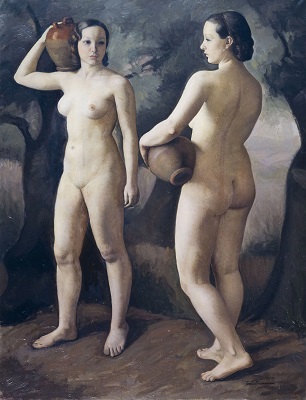
Historiographical discourses have treated the woman artist as an interloper, as if art was alien to her by nature, since what is natural in the woman – Rousseau’s internalized theory –is marriage and motherhood, and so a career as an artist was thought to be unnatural.
The notion of naturalness is a cultural construct, and therefore fictional. The problem lies in the normalization of ideas that, by being handed down from generation to generation, become ingrained in the collective imaginary and give rise to stereotypes.
The question wrongly formulated
«The chronicler, who recounts events without distinguishing between the great and small, thereby accounts for the truth, that nothing which has ever happened is to be given as lost to history.»
Walter Benjamin, Theses on the Philosophy of History (1940)
If no attention is paid to the conditions of production; someone might answer the question about women artists by alluding to a presumed women’s unsuitability for artistic creativity; otherwise, why haven’t they done it?
Faced with this nonsense the impulsive feminist response is to quickly recite the list of women artists that they can think of. This is actually a mistake, as this reply, far from refuting the prejudices of the question, is accepting them as valid premises.
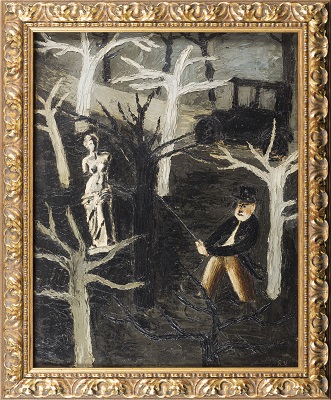
The mythology of great geniuses
When Nochlin speaks of mythology she is referring to the art historiography structured around great geniuses (great artists like Picasso or Michelangelo), a narrative that has systematically ignored the geniuses’ context and the conditions in which they produced their masterpieces.
A basic starting point, but one that has often been ignored, is that not everyone can devote him or herself to art (Nochlin is referring to the art of the great academies). Until the middle of the 19th century art was a privilege generally restricted to men from families of a certain class, and later from wealthy families.
Most of the great geniuses were artist’s sons. They were given the relevant technical and intellectual training and stimulation from an early age. There has been a tendency to hide this information in the biographies of great artists in the hope of passing them off as innate geniuses; passing through a period of training does not detract from their output.

Most of the women artists that we know of before the mid 20th century were also the daughters of families with a history of artists in their ranks. If a woman came from a wealthy family, was a painter’s daughter, and moreover was trained and developed the right painting skills, how is it that she did not subsequently devote herself to art professionally? Until well into the 20th century, it was socially acceptable for women to paint as a pastime; however, if they wanted to devote themselves to it professionally, their femininity, their nature, was questioned. And yet no man would ever feel that he was renouncing his virility by devoting himself to art.
The anatomy class
At the start, when we spoke of the Academy as a dictator and censor of taste, we mentioned the hierarchy of pictorial genres and we said that the major painting competitions considered the history genre to be the highest. First prizes were therefore always awarded for history painting.
The Academy awarded prizes according to technical aspects, particularly the creation of perspectives and volumes in the human figures, acquired and developed in anatomy classes. Anatomy classes consisted of drawing a model from life, and female artists were refused admission to them because it was considered an indecent activity for a woman. There was nothing wrong, on the other hand, with men having women as models.
We should not be surprised, then, by the absence of women artists winning first prizes in history painting, or by the fact that women’s production in the period was full of still-lifes and vases of flowers.
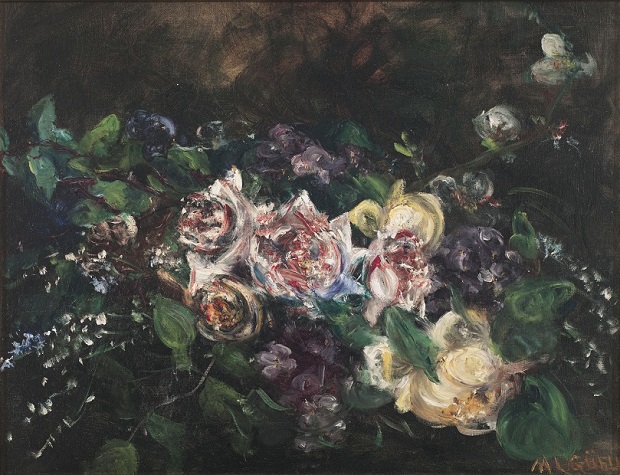
Museums as places of memory
Marian López F. Cao says that when a boy or a girl enters a museum, they experience it is as if they were entering history. They believe that on the walls of the rooms they will find everything important from the past, what they have to know, what they must respect and what, they assume, belongs to them.
What the museum shows us is a partial collection, a selected and significant portion of history. In this choice what is shown is as important as what is not. The systematic absence of certain subjects clearly shows the dispensability, the subordination, of these passive subjects with respect to the active subject and producer of culture.
«In cultural invasion it is essential that those who are invaded come to see their reality with the outlook of the invaders rather than their own; for the more they mimic the invaders, the more stable the position of the latter becomes.»
Paulo Freire, Pedagogy of the Oppressed (1970)
The internalization of the museum’s discourse serves to reinforce and institutionally legitimate importance of some and the irrelevance of others. Selective and systematic omission gives rise to the deprivation of the past and therefore, to the denial of tradition, a critical absence in the construction of cultural-personal identity.
The museum – as an institution – came into being in a context of enlightened ideas and values in which the sphere of men’s action was taken as a model and was associated with cultural thought and output. The passive female agent has historically been presented in contrast to the active male agent. In this repeated dogmatic narrative a stereotype is perpetuated that produces, consolidates and naturalizes inequalities.
Museums today: re-examining the gaze
The museum, despite, in theory, being reconsidered and presented as an open forum for discussion and reflection, has, in practice, continued to be a place of power and representation.
Benjamin says that no historical event should be left out of history, and that in history there are no primary or secondary events; this re-examination of the gaze ought to infer that no artistic event should be banished from the history of art because of sexual difference, or because it does not fit in the categories imposed by the dominant power, whether this is the patriarchy, capitalism or the art market.
«Social practices may engender domains of knowledge that not only bring new objects, new concepts, and new techniques to light, but also give rise to totally new forms of subjects and subjects of knowledge. The subject of knowledge itself has a history.»
Michel Foucault, La verdad y las formas juridicas (1978)
Categories are conventional, in other words they are fictional constructs that are imposed at a given moment and which end up functioning as autonomous truths after a while. Foucault says that in historical discourses there is no neutrality, there is always a struggle for power.
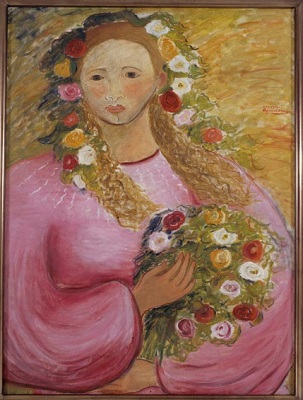
The responsibility of museology
The new museology is committed toa paradigm shift in the idea of the museum and it rescues and incorporates the agents that have been omitted from the traditional museum.
The museum’s current function, says Marian López F. Cao, focused on the interpretation of heritage, presents the museum’s collection as an element for dialogue, as a tool for building bridges between the past and the present of our culture. The object becomes a patrimonial asset and goes from being considered an artistic legacy to becoming a testimony of civilization.
The ideas of the so-called critical museology are based on the premise that the limits of what is considered heritage and culture are susceptible to review. Exhibitions go from focusing on the objects exhibited to stressing the interest in the discourse and visitors’ possibilities of interpreting it.
The Museu Nacional d’Art de Catalunya, aware of this reality, claims in the document of its Strategy and Action Plan that one of the museum’s priorities is the transformation of the museum itself: work is being done with a view to making the museum a connective space, a generator of questions and experiences; the idea is to abandon the prescriptive role that museums have historically had.
With regard to the collection, it declares the importance of making artists visible who are considered to be outside the canon, or to belong to minorities.
Another sign of this self-critical approach is the creation of the The Art Museums Network of Catalonia, based on the collaborative work of different museums in Catalonia for the promotion and the dissemination of the Catalan artistic heritage. One of the projects the network is working on at the moment demands the presence of women in Catalan art, and its goal is to make artists systematically relegated to the museum’s storerooms visible.
The need to transform the gaze
Although it has been acknowledged that museums have often acted as a means of ideological creation, says Marian López F. Cao, it is often overlooked that the political aspect is based on an androcentric discourse. It is naive to overlook the museum’s dependence on the social structure in which it emerges and with respect to the categories with which it is constructed. Therefore, it is not enough to put on exhibitions of women artists. It is a good start, no one doubts that, but it is fundamental to know the ways in which these female artists relate to art and creativity. If all the agents involved in cultural production are not taken into account, there may be some superficial reform, but there will be no transformation.
The museum’s library also reviews its gaze
The Joaquim Folch i Torres Library, through its project to manage the collection of small catalogues that includes different types of ephemera (ephemeral documents that include exhibition catalogues, invitations to openings, visiting cards, etc.), has the goal of revealing what was left locked in filing cabinets.
The library is committed to a basic first step: cataloguing and uploading to the catalogue (CCUC) the details of women artists that can be gleaned from the description of the documents.
It is an act of condemnation of the systematic neglect, and at the same time the acknowledgement of a hitherto invisible reality.
Many of these women artists are not included in dictionaries of artists nor do they appear in Internet searches. We therefore have documents that in many cases are the only source bearing witness to that person’s artistic activity.
The small catalogues section is, for the library’s team, a rough diamond that we are beginning to polish, and we trust that it shines a light on all these women artists who have been kept in darkness.
BIBLIOGRAPHY
- Faxedas, M. (2009). Feminisme i història de l’art. Girona: Documenta Universitaria.
- López F. Cao, M. (2010). Mulier me fecit: hacia un análisis feminista del arte y su educación. Madrid: Horas y horas.
- Mayayo, P. (2003). Historias de mujeres, historias del arte. Madrid: Cátedra.
- Nochlin, L. (1993). Femmes, art et pouvoir et autres essais. Nîmes: Jacqueline Chambon.
- Porqueres, B. (1995). Deu segles de creativitat femenina: una altra història de l’art. [Bellaterra]. Institut de Ciències de l’Educació, Universitat Autònoma de Barcelona.
- Vigué, J. (2002). Great women: masters of art. New York: Watson-Guptill.
Bibliography of extracts quoted and translated:
- Benjamin, W. (2007). Tesis sobre la filosofia de la història. Valencia: Ateneu de Benimaclet.
- Foucault, M. (2003). La verdad y las formas jurídicas. Barcelona: Gedisa.
- Freire, P. (1970). Pedagogía del oprimido. Madrid: Siglo XXI.
- Rousseau, J-J. (1973). Emilio o de la educación. Barcelona: Fontanella.
- Wollstonecraft, M. (2018). Vindicación de los derechos de la mujer. Madrid: Cátedra.
Related links:
- Women in art. From the invented figure to their own bodies. Virtual tour
- Women artists at the Museu Nacional
- Lluïsa Vidal, a woman artist in a world of men
- The Evolution of Woman illustrated through Art
- Female identities in art
Biblioteca















